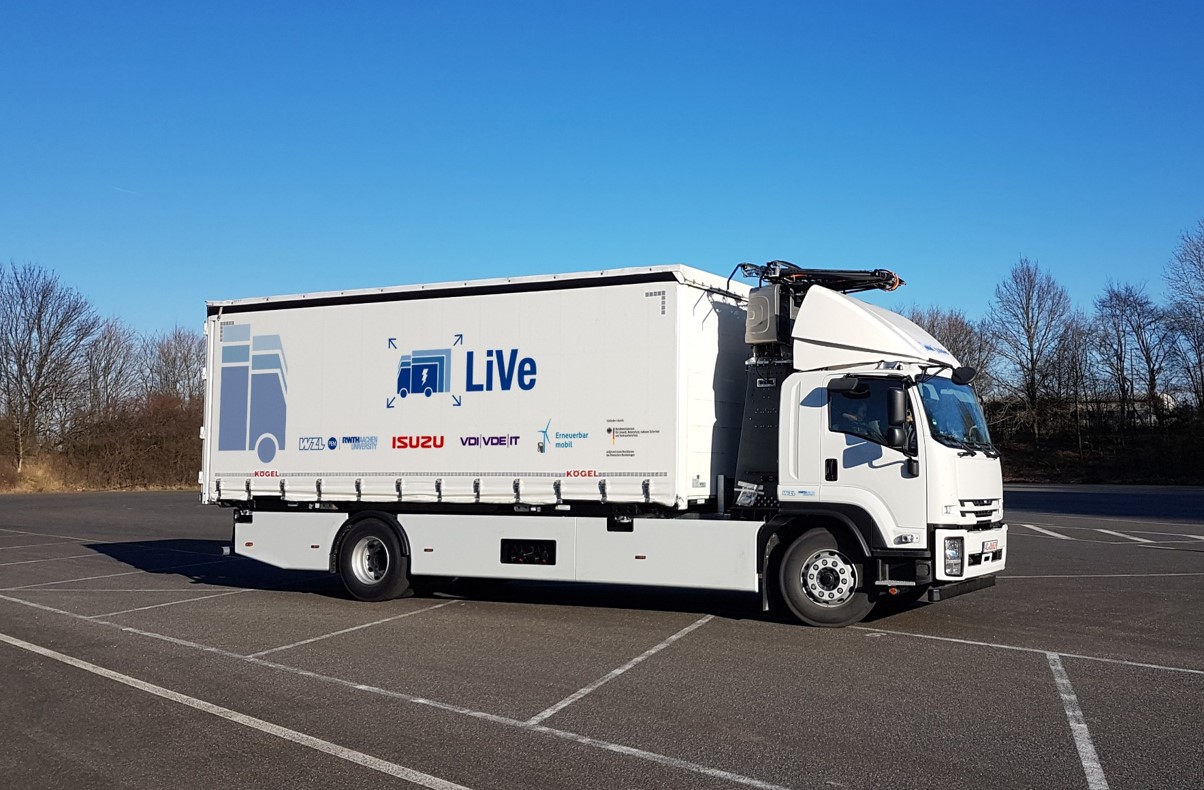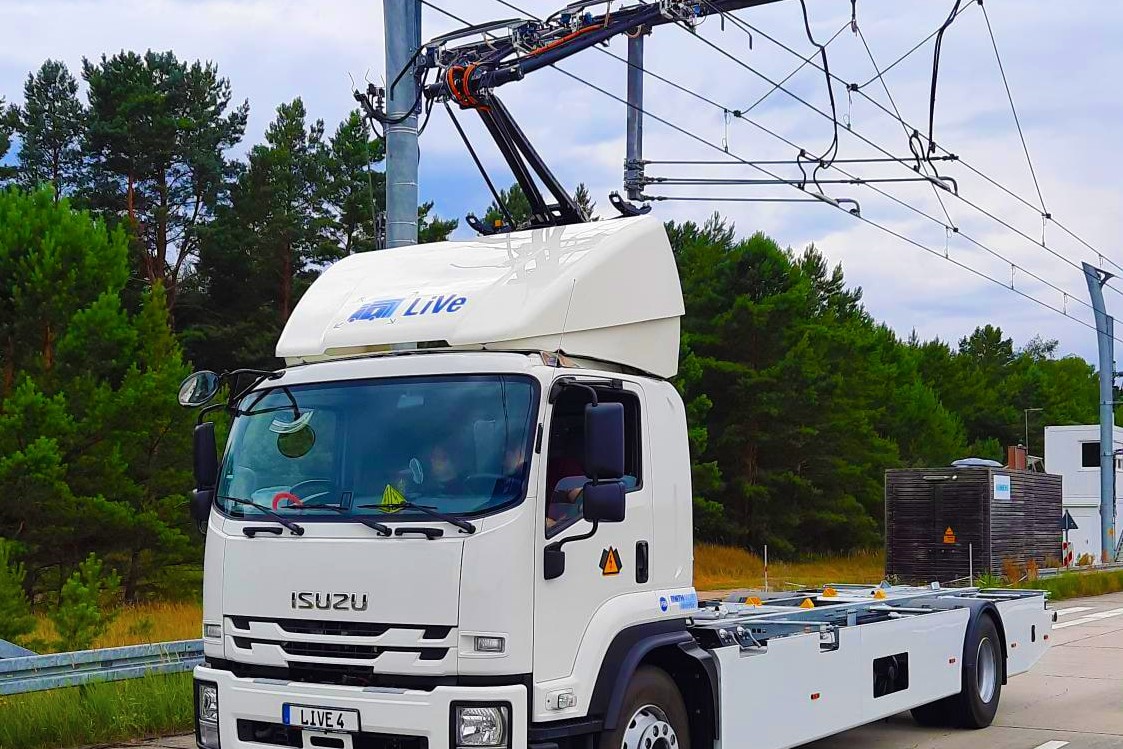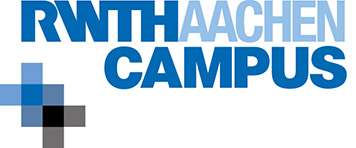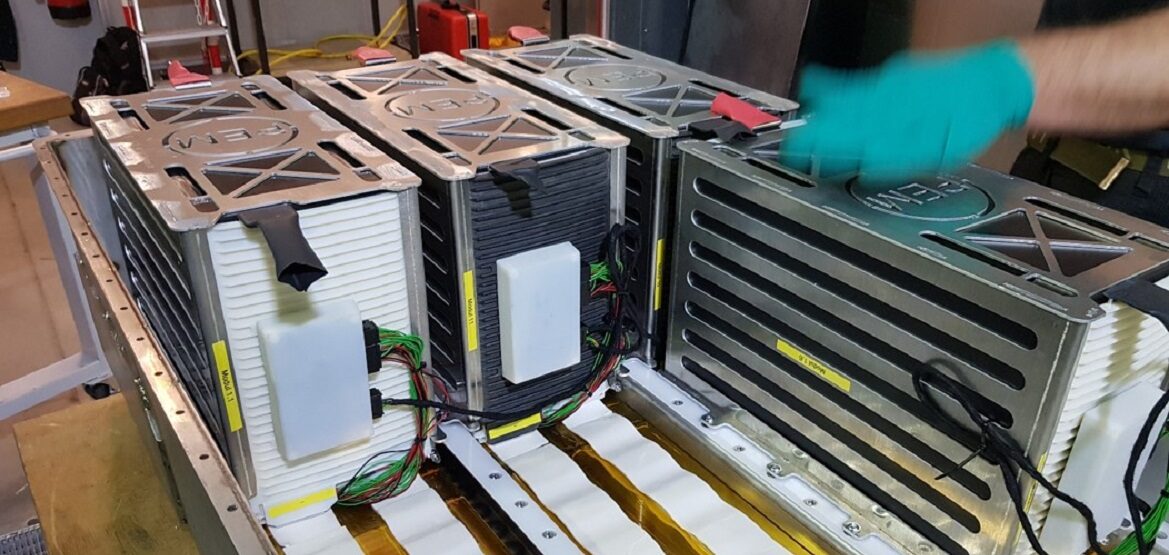22. August 2022
Fruit from Spain, flowers from the Netherlands or miniature figures from the Erzgebirge. Every day, countless goods are transported across Europe on trucks. Traffic and transport are considered the second largest cause of climate-damaging CO2 emissions in Germany. The transport and mobility sector is responsible for around 20 percent of total annual greenhouse gas emissions, 35 percent of which are generated by goods and freight transport with heavy trucks alone. To achieve climate neutrality, researchers at RWTH Aachen University are working on electrifying freight transport. With success, because at the end of July, Europe’s first prototype of an all-electric truck with a catenary current collector was successfully subjected to real-life conditions.
Until now, there has been no economical solution for the electrification of vehicles up to a maximum of 26 tons gross vehicle weight due to the high energy requirements of trucks. In the research project “Life Cycle Cost Reduction in Electric Distribution Transport” (LiVe), funded by the German Federal Ministry for the Environment, Nature Conservation, Nuclear Safety and Consumer Protection (BMUV), solutions are currently being developed to optimize the future use of heavy long-haul vehicles in terms of energy requirements and life cycle costs.
In addition to the Chair of Production Engineering of E-Mobility Components (PEM), the Laboratory for Machine Tools and Production Engineering (WZL) of RWTH Aachen University, the Japanese vehicle manufacturer Isuzu and the Ramp-Up Factory are involved in the research project.
In addition to the Chair of Production Engineering of E-Mobility Components (PEM), the Laboratory for Machine Tools and Production Engineering (WZL) of RWTH Aachen University, the Japanese vehicle manufacturer Isuzu and the Ramp-Up Factory are involved in the research project.

PEM
During the development of the all-electric truck with overhead current collector, the Ramp-Up Factory in the Production Engineering Cluster on RWTH Aachen Campus provided support with the overall vehicle structure and with the production of the battery packs, which was optimized for the remanufacturing of individual battery modules and cells. Individual battery modules that fail or are not powerful enough for vehicle operation can thus be flexibly replaced. The housing for the battery pack was developed in the Ramp-Up Factory, manufactured by laser cutting, bending and remote laser welding, and then assembled and integrated into the vehicle.
The electric truck was used on the five-kilometer “eHighway” of
in Groß-Dölln near Berlin and completed its first successful test drive.
first successful test drive. In recent months, several driving tests had already been completed in Aachen to simulate the so-called “ironing on” of the current collector, a pantograph, to the overhead line while stationary. On the test track in Brandenburg, the truck was then brought into contact with the overhead line for the first time while driving and supplied with power for propulsion via the pantograph.
in Groß-Dölln near Berlin and completed its first successful test drive.
first successful test drive. In recent months, several driving tests had already been completed in Aachen to simulate the so-called “ironing on” of the current collector, a pantograph, to the overhead line while stationary. On the test track in Brandenburg, the truck was then brought into contact with the overhead line for the first time while driving and supplied with power for propulsion via the pantograph.

PEM/Rahul Pandey
The BMUV-funded research project will run until the end of 2022, by which time two more electric trucks are to be developed, including a hydrogen-powered vehicle with a fuel cell. The knowledge gained from the test drive in Groß-Dölln will be incorporated into the further development of the research project by the PEM, the WZL, Isuzu and the Ramp-Up Factory.
Together with science and industry, the Ramp-Up Factory forms an expert network that deals with specialist trend topics. With its technical equipment and know-how in the production of small series, especially of (electric) vehicles, the Ramp-Up Factory primarily supports small and medium-sized companies.


